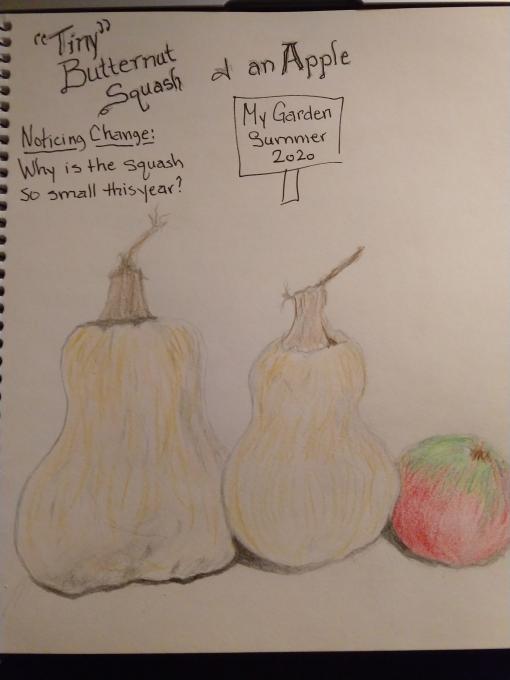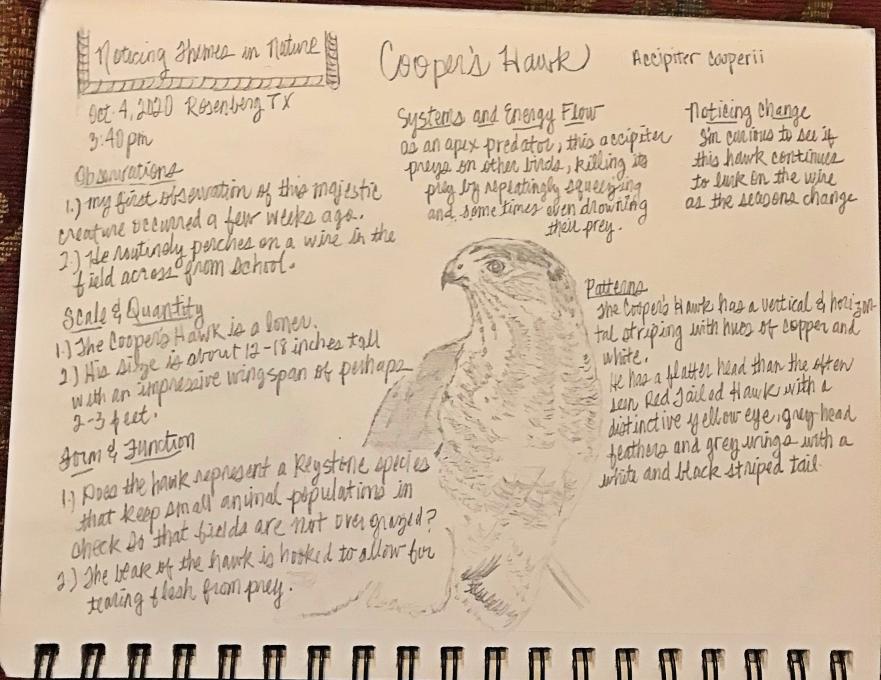The Cornell Lab Bird Academy › Discussion Groups › Nature Journaling and Field Sketching › Noticing Themes in Nature
-

I live in Oregon and love to hike in the Cascade Mountains, rarely do I sit alone and meditate. Liz inspired me to do just that and journal about it. Thank you - this was quite the experience. -
I think I need to ask myself more questions, get me thinking about the finer details of the subject.

-
I think you have asked yourself the questions already. By the pictures and the information that flows from your drawings, even if there is no question shown. You have answered the question in your head with such amazing detail. Thank you for sharing
-
-

-

-
May 1, 2021 Hot/sunny 8:45 am Ev. Nat. Pk. Long Pine Key
Observation 1. What was that pair of small grey-green birds that flit between the pine trunks? Sometimes upside down. Very busy. Not black and white warblers, not nuthatches or brown creepers (out of area). Silent. What are they looking for? Where did they come from? Are they on the way to somewhere? Who are they?
Observation 2. He was on the ground - a black bird. Way on the other side of the parking lot. Oh, a purple grackle. Then he flew at me. He's coming right at me. Will he stop? Should I duck? No. I'll sit still. Whew, he landed about 3 feet from my picnic table on the ground. Was he begging from me? But no, he wanted a big red bug! How had he seen that from so far away? Why did he pick on that? He hopped to the van and went around it. Walked into the woods behind me. I heard his little footsteps in the brown dry leaves. Then he was gone.
So, other questions - What else does he like to eat out here? Grackles often go in flocks, so where are his friends? Is this his usual feeding routine?
Half an hour later he reappeared and went into a clump of bushes. Exited. Followed by a squally fledgling. Oh my, could he be a she?-
I love your observation and questions. Thank you for sharing.
-
-

-

-
I watched this porcupine in a willow tree as it climbed up to some of the thinner branches and then returned again to the original spot to sleep. I didn't know anything about porcupines but, I read that porcupines often sleep in trees. They are nocturnal and feed on vegetation and some insects. The porcupine stayed in the tree until dusk, in the morning he was gone.
-
4/9/21 The porcupine is back in my willow tree. I now call him "Bristles". Today he climbed up to higher branches and he was eating the new yellow/green shoots on the willow branches . Sometimes he looked like he was going to fall but didn't. He grasped the branch he was on with his sharp claw while reaching out and grabbing the young willow shoots. He also used his tail for support. Sometimes "Bristles" would just curl up rest for a while. He was still in the tree at dusk.
-
@Dee Thanks for sharing your Porcupine experiences. I don't think I have them here in Westerns NC... doesn't matter. Astounded that they spend so much time in trees! Great observations.
-
I never knew porcupines climbed trees... how interesting. Good catch!
-
-

-
Themes seem to pop up with everything I look at! The overlap of themes was overwhelming at first, but I decided to just roll with it - nature isn't black and white, after all. For example, when comparing the size and location of two groups of similar ants, my possible explanations and further questions involved form & function and systems & energy flow.

-
Yes that's true one questions leads to another and another. Isn't it great to be so inquisitive! Puts a little spunk back into my step and joy into my heart!
-
-

This was one of a few pages I did during the "themes" lesson. In this case I was looking at patterns in the camellia petals. I was noticing how the petals near the center lined up radially away from the center. I also noticed that in the tip of each petal was a slight thickening that showed when the light came through the petal.-
Cool! Thanks for the inspiration
-
-
For my nature theme, I chose form & function.

-
Oh lovely, I like the colouring on the head!
-
-
 I
I
I made my sketch of the beetles (below) and came home to look up what they were. These are box elder bugs, and I love the markings. They appear to be harmless to the trees, seeds, and leaves that they feed on. This time of year seems very unlikely for the seedpods, but according to other commenters I found online they do also eat other leaves, dung, and dead insects. Pretty much anything. Doing this thematic exercise helped me to appreciate and learn from the insects rather than just be annoyed they chased me from my creekside sit spot! -
I was looking for a seat by the creek in a nearby park, but found far too many insects flying around, which is unusual. They were clustered thick on the ground in places, and flying everywhere.

-
Walk in the park, overcast skies with the sun peaking out now and then, temperature in mid 70’s. The turtles were out on logs all over the pond. Some logs had 10-15, some fewer. One log had two, one had just one. Why so many turtles to a log? For companionship, for warmth? Are they spacially aware they are so crowded?
-
 During a recent wandering at the downtown waterfront in my hometown, I noticed how the snow at the base of trees, deciduous and coniferous, melts in a ring around the base. Why? I thought that perhaps the tree itself, being alive, would exude some heat (however minor). So I looked at manmade/non-organic objects but they too often had a ring at the base so that can't be the reason (or at least not the whole reason). What about solar energy heating the bark? A drip line from the tree's branches perhaps as I noticed that evergreens had larger rings around them than their deciduous counterparts. But that could also be from reduced snow that falls at the base due to the tree's canopy? Time to do some research.
During a recent wandering at the downtown waterfront in my hometown, I noticed how the snow at the base of trees, deciduous and coniferous, melts in a ring around the base. Why? I thought that perhaps the tree itself, being alive, would exude some heat (however minor). So I looked at manmade/non-organic objects but they too often had a ring at the base so that can't be the reason (or at least not the whole reason). What about solar energy heating the bark? A drip line from the tree's branches perhaps as I noticed that evergreens had larger rings around them than their deciduous counterparts. But that could also be from reduced snow that falls at the base due to the tree's canopy? Time to do some research. -



I became really absorbed with drawing the individual capillary like patterns on this leaf, which when i was done resembled both a lung and a river system, beautiful pattern! I walk past this plant everyday, and have never stopped to really look at it - I am really enjoying this opportunity to finally pay attention to the complexity of something as simple as a leaf.-
These sorts of patterns draw my attention as well. Broccoli look like miniature trees, clouds resemble the patterns of settled sand at the shoreline, a river with its tributaries resembles our circulatory system, a flock of birds, especially when they turn as a group, resemble a school of fish. I'm happy to hear someone else notices these quirky similarities between very different "systems."
-
-
We just had a big northeaster with snow, rain, wind so not possible to go sit outside. Will go out shortly to watch the ocean. See how the various winter waterfowl (e.g., eiders, buffleheads) are weathering the storms
-



-

-

-
Nov 23, 2020 - Lamanai, Belize
Example #1 - Leafcutter Ants working during the day.
Example #2 - Bat falcons only eat a bird's head. Brain and eyes taste good? Maybe Cornell can shed some light on this for me? Thanks.

-
 I need to practice with themes for awhile and maybe brainstorm some journal topics here. I went outside and was looking for patterns when I saw the cottontail and felt compelled to sketch it. I didn’t have much time though and I struggled with proportions, but it was fun.
I need to practice with themes for awhile and maybe brainstorm some journal topics here. I went outside and was looking for patterns when I saw the cottontail and felt compelled to sketch it. I didn’t have much time though and I struggled with proportions, but it was fun. -
 Many questions come to mind, what do they eat, do they feel the cold, do they join other flocks elsewhere. It’s a challenge to sit outside in nature due to winter weather but my backyard feeders provide me lots of movement. The house sparrows dart around in groups, the leaves are all being blown off now, patterns as they wave their final farewells. They provide part of the ecosystem with fertilizer in the spring. How many leaves are too many? This module has been really interesting, and as others have said a real help to focus and be present in nature.
Many questions come to mind, what do they eat, do they feel the cold, do they join other flocks elsewhere. It’s a challenge to sit outside in nature due to winter weather but my backyard feeders provide me lots of movement. The house sparrows dart around in groups, the leaves are all being blown off now, patterns as they wave their final farewells. They provide part of the ecosystem with fertilizer in the spring. How many leaves are too many? This module has been really interesting, and as others have said a real help to focus and be present in nature. -
After an incredibly hot summer with no rain,, I notice the change in my vegetable garden. Tiny, tiny butter nut squash!

-

Read More:
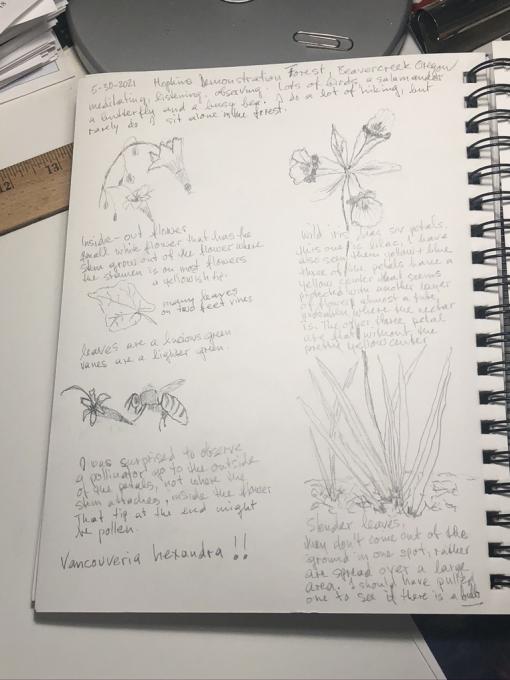
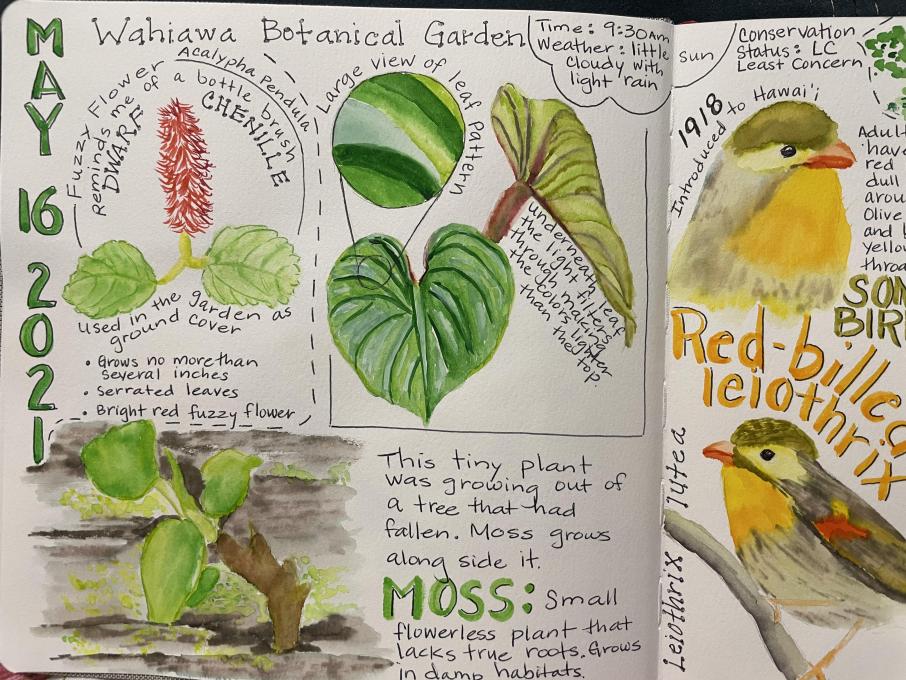
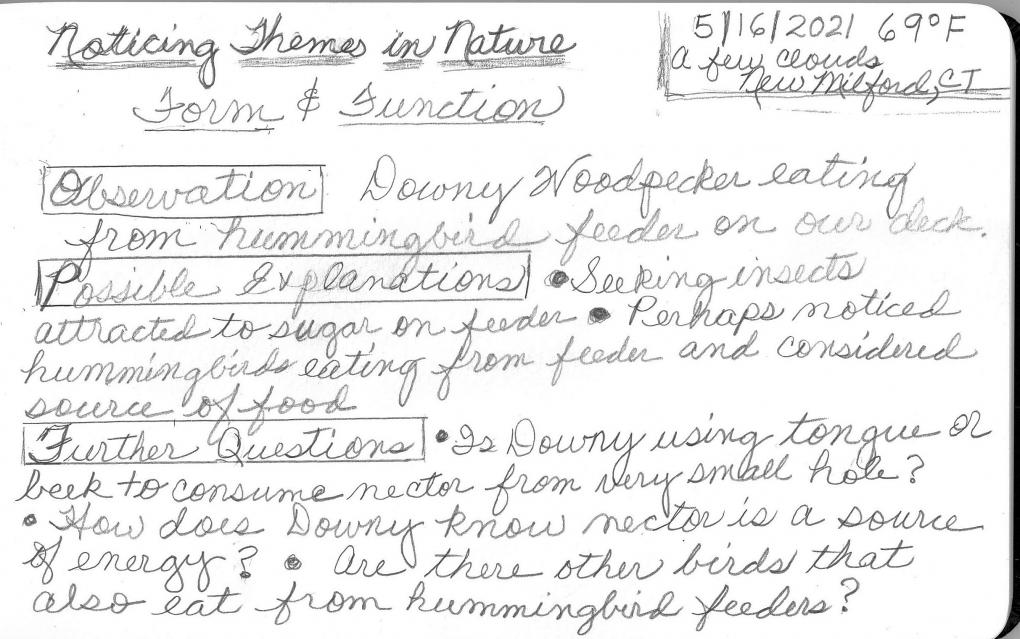
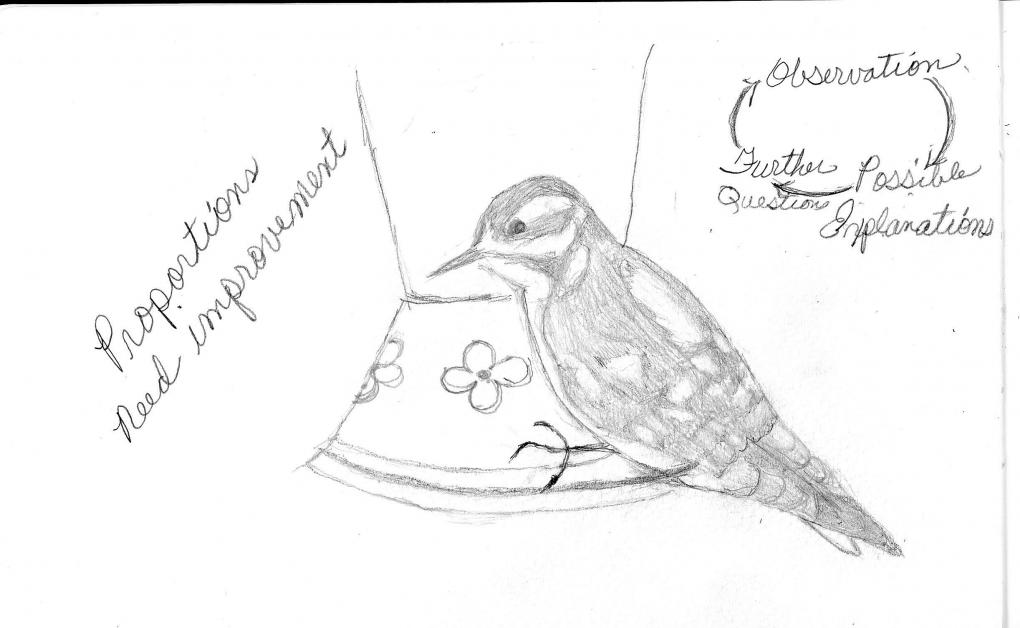
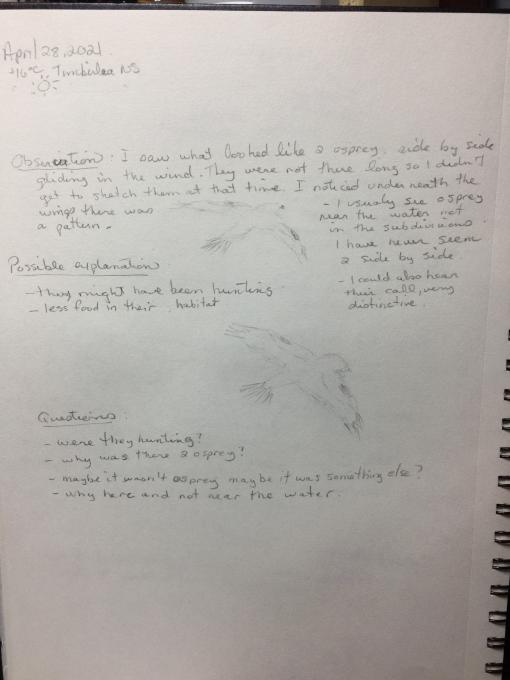
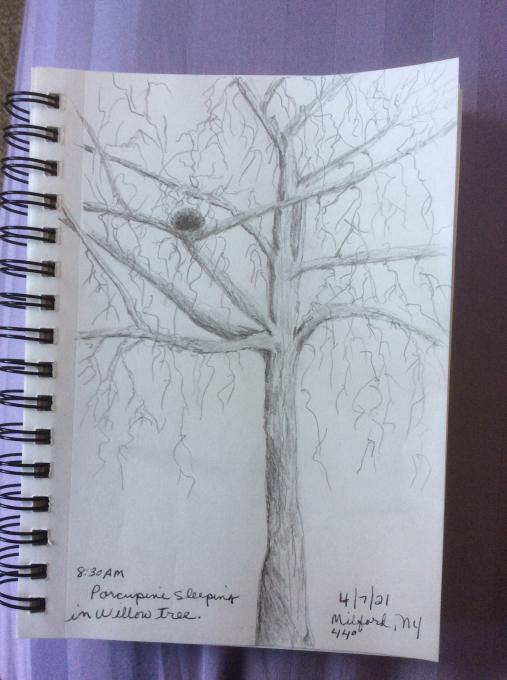
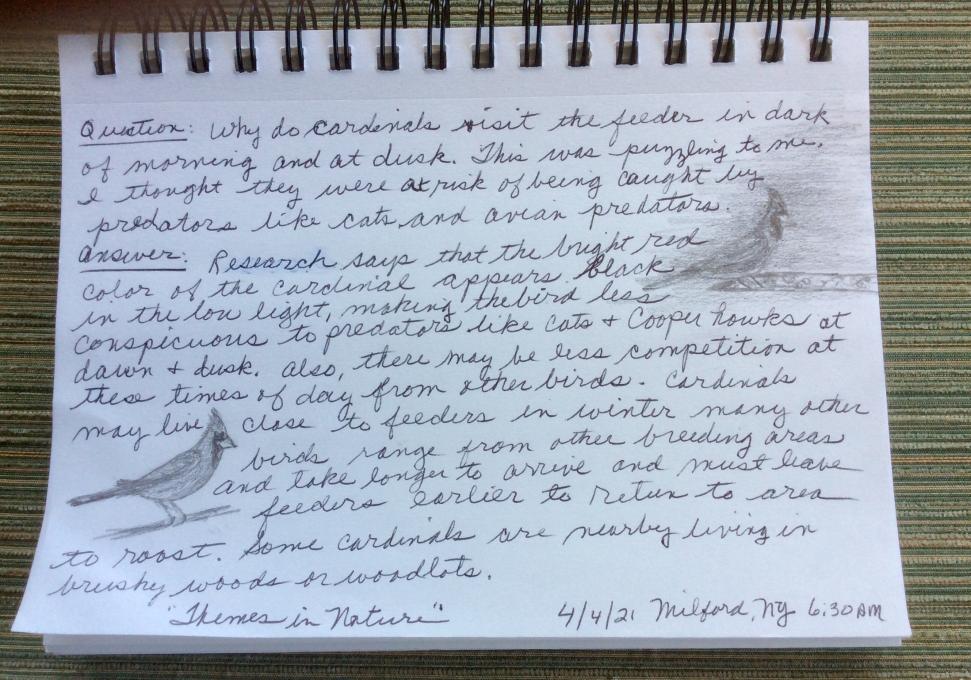
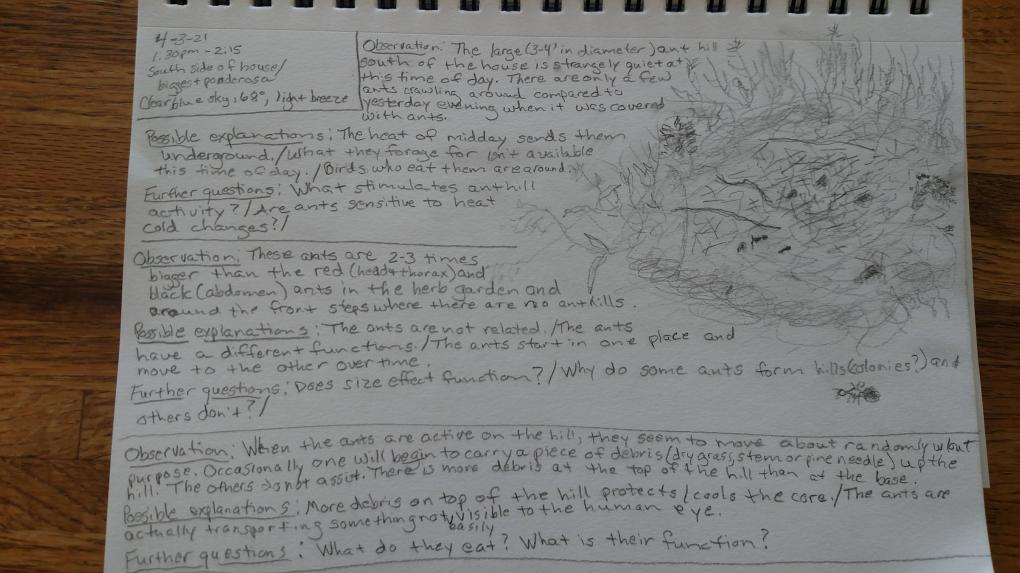
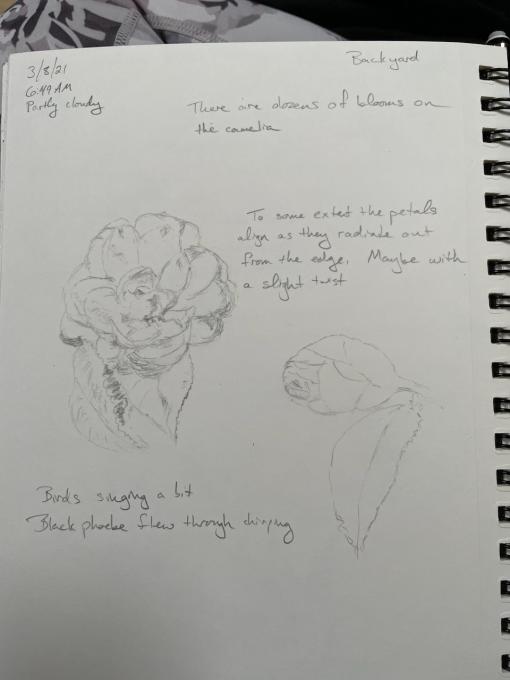
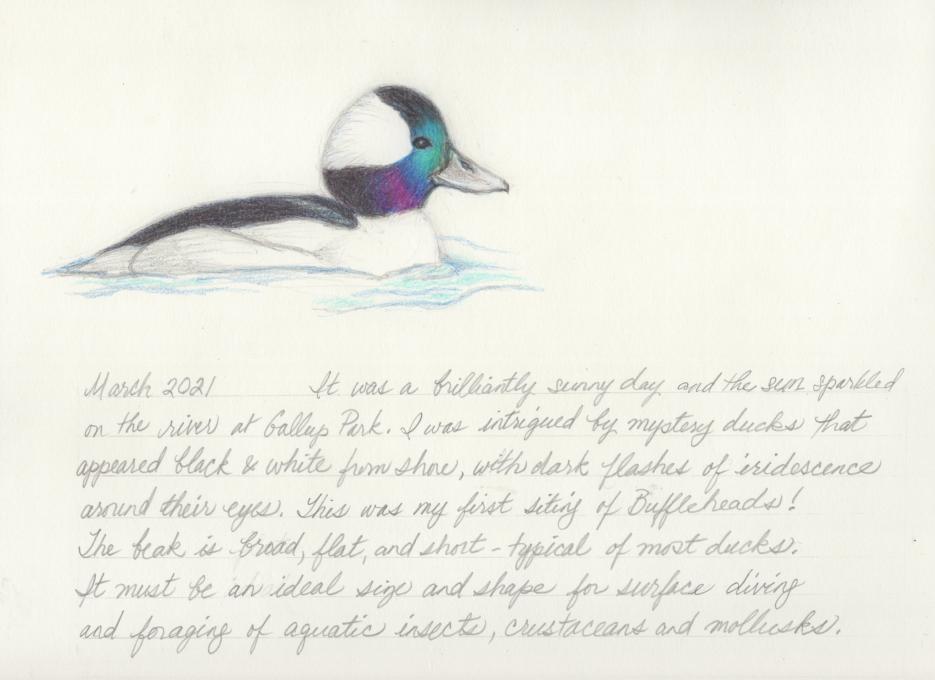
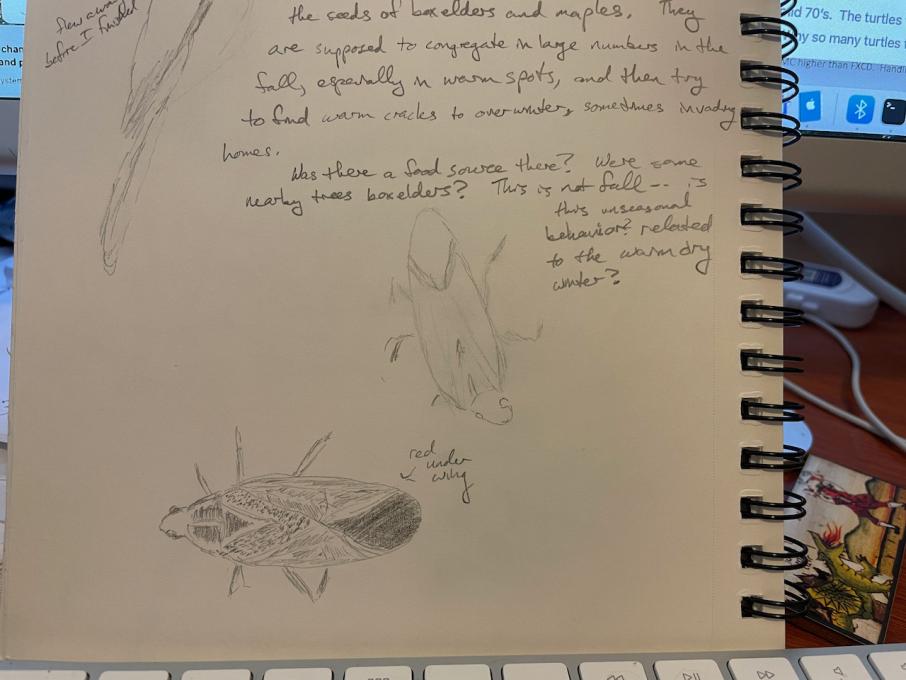 I
I
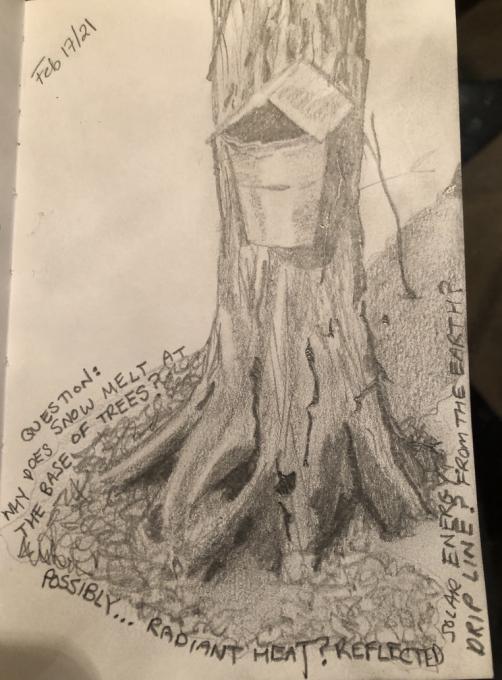 During a recent wandering at the downtown waterfront in my hometown, I noticed how the snow at the base of trees, deciduous and coniferous, melts in a ring around the base. Why? I thought that perhaps the tree itself, being alive, would exude some heat (however minor). So I looked at manmade/non-organic objects but they too often had a ring at the base so that can't be the reason (or at least not the whole reason). What about solar energy heating the bark? A drip line from the tree's branches perhaps as I noticed that evergreens had larger rings around them than their deciduous counterparts. But that could also be from reduced snow that falls at the base due to the tree's canopy? Time to do some research.
During a recent wandering at the downtown waterfront in my hometown, I noticed how the snow at the base of trees, deciduous and coniferous, melts in a ring around the base. Why? I thought that perhaps the tree itself, being alive, would exude some heat (however minor). So I looked at manmade/non-organic objects but they too often had a ring at the base so that can't be the reason (or at least not the whole reason). What about solar energy heating the bark? A drip line from the tree's branches perhaps as I noticed that evergreens had larger rings around them than their deciduous counterparts. But that could also be from reduced snow that falls at the base due to the tree's canopy? Time to do some research. 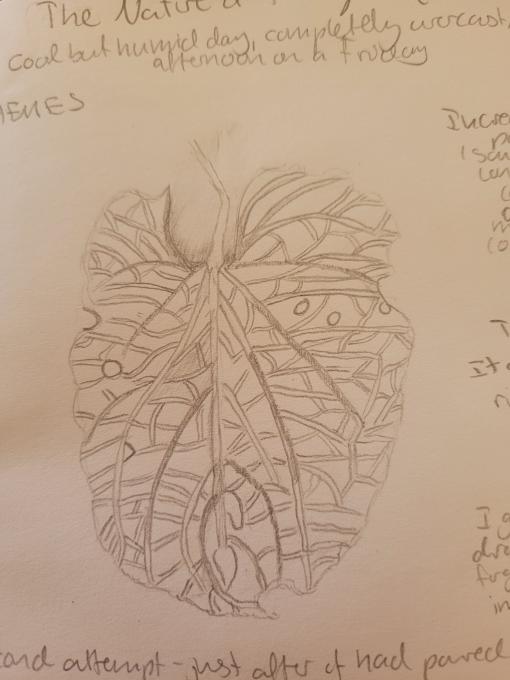
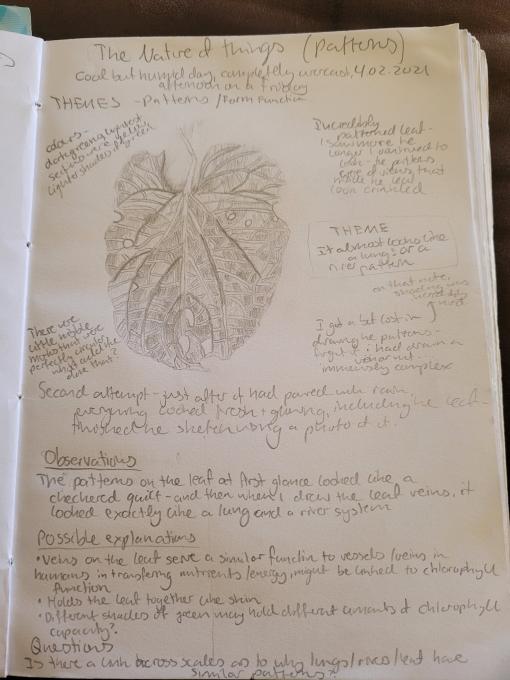
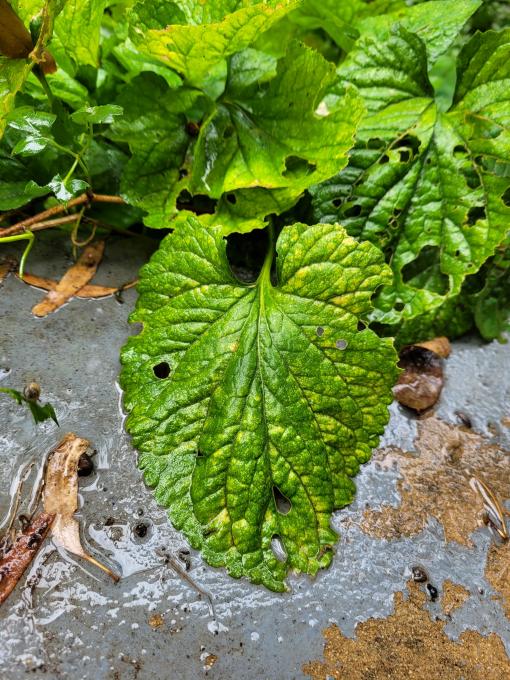
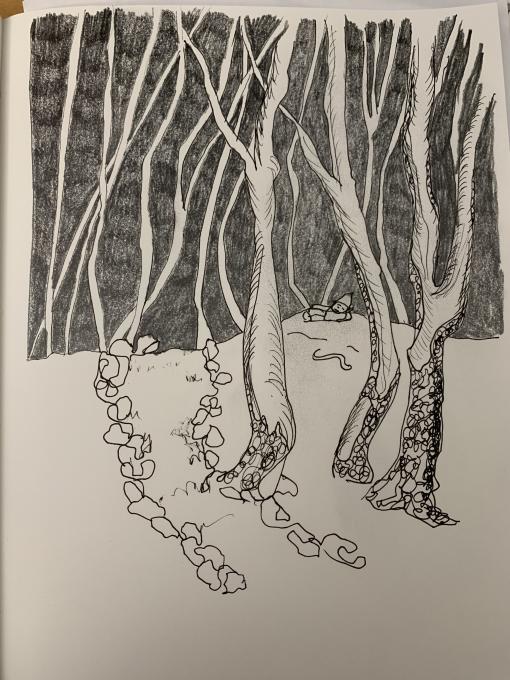
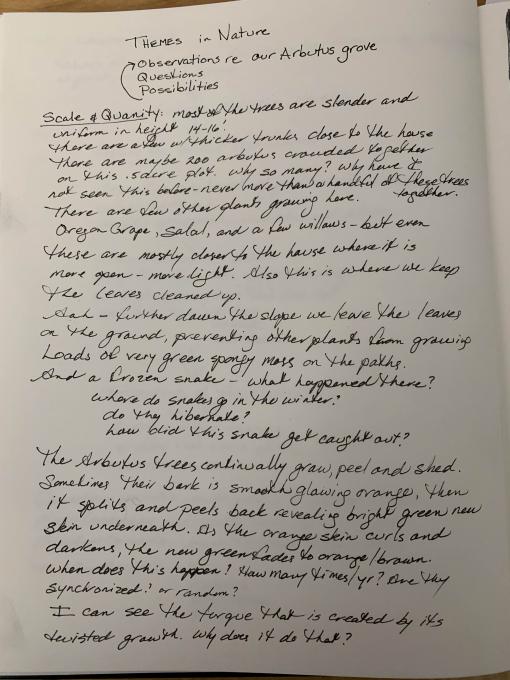
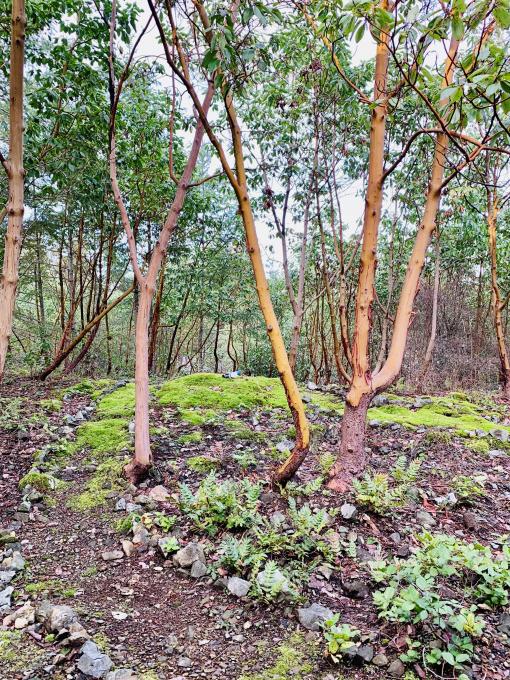
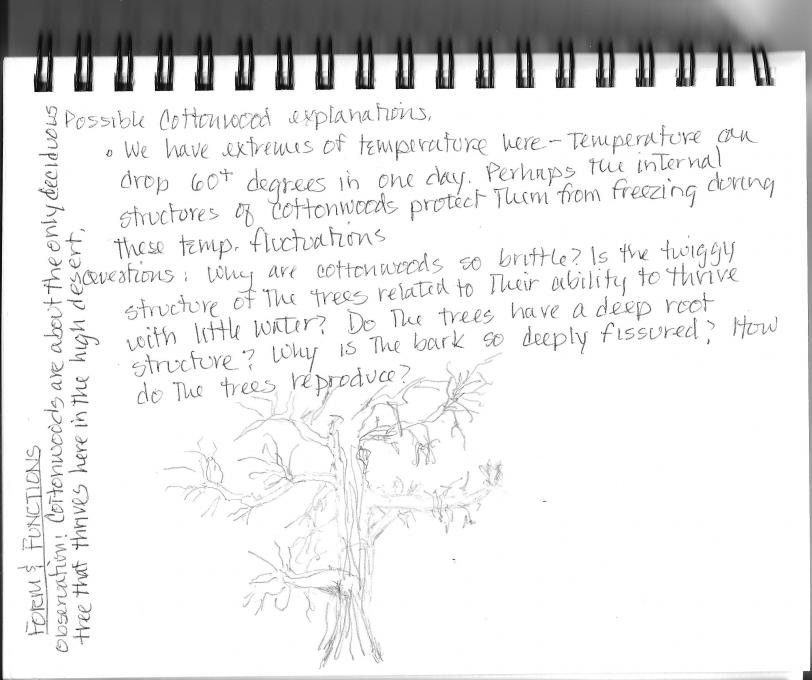
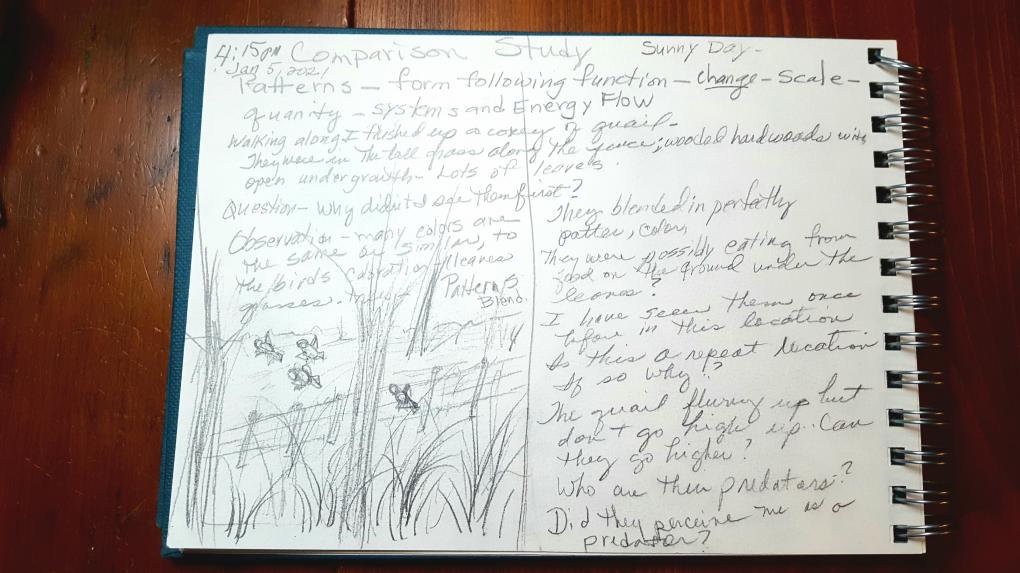
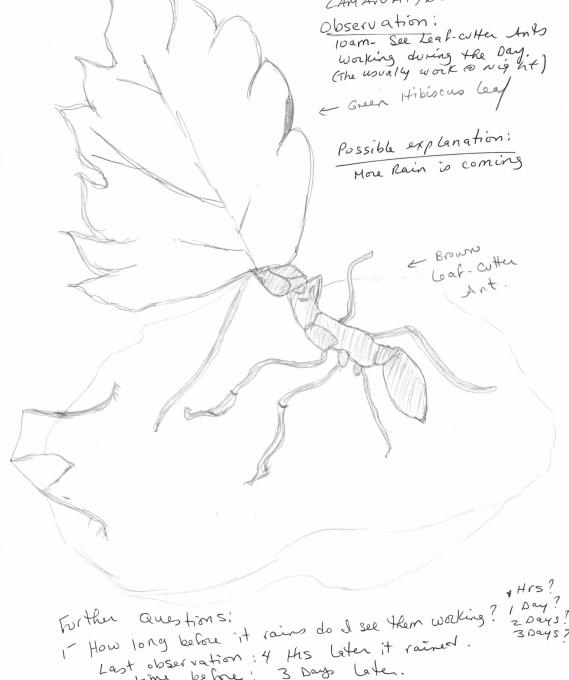
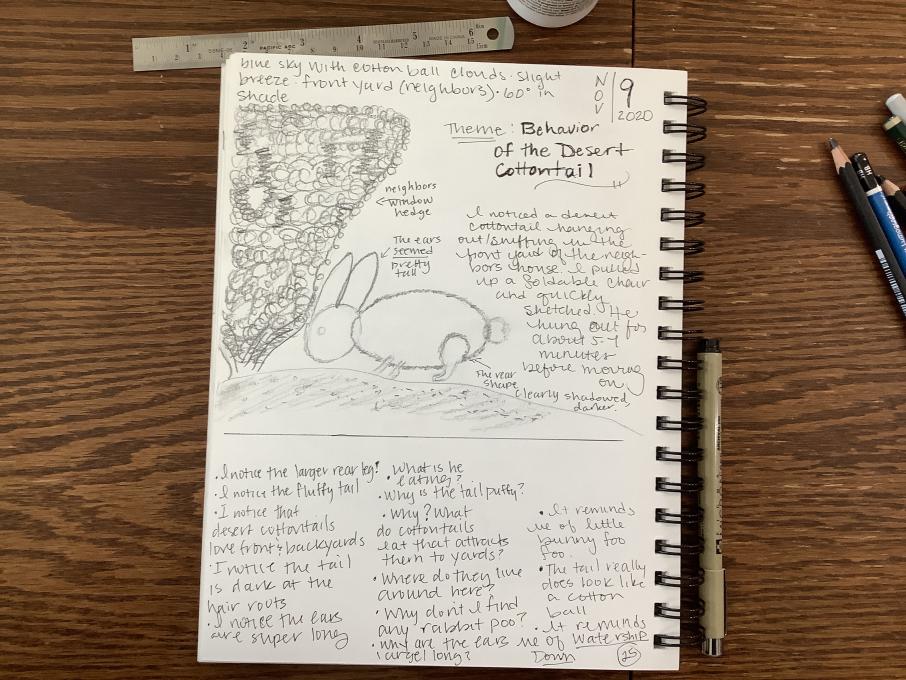 I need to practice with themes for awhile and maybe brainstorm some journal topics here. I went outside and was looking for patterns when I saw the cottontail and felt compelled to sketch it. I didn’t have much time though and I struggled with proportions, but it was fun.
I need to practice with themes for awhile and maybe brainstorm some journal topics here. I went outside and was looking for patterns when I saw the cottontail and felt compelled to sketch it. I didn’t have much time though and I struggled with proportions, but it was fun. 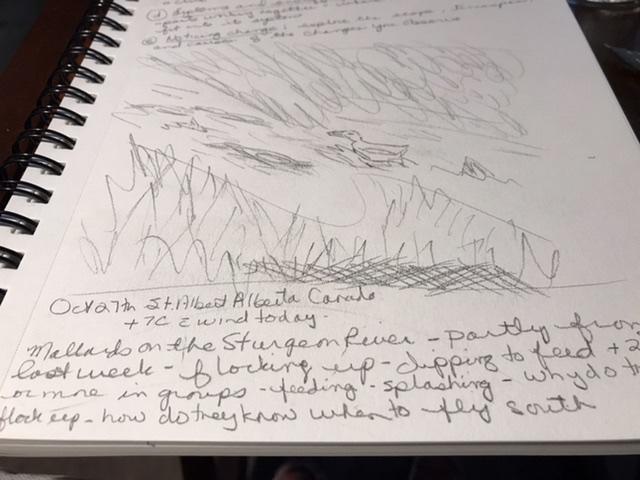 Many questions come to mind, what do they eat, do they feel the cold, do they join other flocks elsewhere. It’s a challenge to sit outside in nature due to winter weather but my backyard feeders provide me lots of movement. The house sparrows dart around in groups, the leaves are all being blown off now, patterns as they wave their final farewells. They provide part of the ecosystem with fertilizer in the spring. How many leaves are too many? This module has been really interesting, and as others have said a real help to focus and be present in nature.
Many questions come to mind, what do they eat, do they feel the cold, do they join other flocks elsewhere. It’s a challenge to sit outside in nature due to winter weather but my backyard feeders provide me lots of movement. The house sparrows dart around in groups, the leaves are all being blown off now, patterns as they wave their final farewells. They provide part of the ecosystem with fertilizer in the spring. How many leaves are too many? This module has been really interesting, and as others have said a real help to focus and be present in nature. 